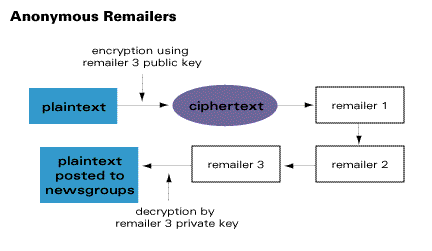In an era where digital interaction is ubiquitous and the threat of data breaches looms large, the concept of cryptography has transcended the realm of academia to become a pivotal component of everyday life. From the moment we send a text to the instant we shop online, cryptography underpins many of our daily activities, encoding our personal information and rendering it secure. Understanding its applications can not only pique your curiosity but also reshape your perspective on modern communication and security.
One of the most ubiquitous forms of cryptography is found in the use of secure websites. When you visit a website that begins with “https://”, you can rest assured that your data is encrypted thanks to Transport Layer Security (TLS). This protocol employs a combination of asymmetric and symmetric cryptography. By generating a unique key pair for each session, TLS allows your browser and the web server to communicate in a way that prevents eavesdropping. When you enter sensitive information—such as credit card details or passwords—this information is transformed into an unreadable format during transit, protecting it from potential cybercriminals.
Moving beyond traditional web browsing, consider the world of messaging applications. Many popular platforms, like WhatsApp and Signal, employ end-to-end encryption (E2EE) to safeguard the contents of your conversations. This means that only the participants in the conversation can read the messages, while intermediaries—including the service providers—are entirely cut out from accessing the content. The application uses public-key cryptography to ensure that messages are scrambled in transit and can only be decoded by the intended recipient. This type of encryption not only preserves the confidentiality of conversations but also bolsters users’ trust in digital communication.
Another fascinating instance of cryptography in daily life is the use of digital signatures. When you send an email, sign a contract, or engage in financial transactions online, digital signatures provide an added layer of security. They function similarly to a handwritten signature, ensuring the authenticity and integrity of the digital message or document. Using a private key, the sender creates a unique code that corresponds with the message. Upon receipt, the recipient utilizes the sender’s public key to validate the signature, confirming that the message has not been tampered with and identifying the true sender. In a world inundated with digital fraud, this cryptographic safeguard is essential.
Moreover, consider how cryptography secures your wireless networks at home. Wi-Fi encryption protocols, such as WPA3, employ sophisticated algorithms to protect data being transmitted between devices and the router. When you connect to your Wi-Fi, the router and your device negotiate a secure session by exchanging encryption keys. This means that unauthorized users cannot easily intercept the data being sent back and forth, thereby maintaining privacy in your online activities—be it browsing, streaming, or working from home.
Additionally, even your physical cash is not exempt from cryptographic innovations. The advent of cryptocurrencies, particularly Bitcoin, illustrates how cryptography can revolutionize financial transactions. Bitcoin uses a decentralized ledger technology known as blockchain, which is underpinned by cryptographic hashes. Each block in the chain is linked to the previous one, making it nearly impossible to alter transaction data retroactively. This cryptographic foundation not only provides transparency and security but also eliminates the need for central authorities like banks. As more consumers begin to adopt cryptocurrencies for daily transactions, the role of cryptography in banking and finance continues to evolve.
As we traverse the landscape of online shopping, we encounter yet another application of cryptography in the form of secure payment gateways. When you make a purchase on an e-commerce platform, your payment information goes through complex layers of encryption to guarantee its safety. Payment gateways utilize cryptographic protocols to transform sensitive data into encrypted formats before they are sent to payment processors. This encryption process not only protects your financial information from opportunistic thieves but also fosters a sense of security while shopping online.
Moreover, think about the increasing prevalence of two-factor authentication (2FA), which integrates cryptography to bolster security for online accounts. 2FA requires users to provide two separate forms of evidence to verify their identity—something they know (like a password) and something they possess (like a mobile device). By sending a one-time passcode via SMS or an authenticator app, this method employs cryptographic principles to create a secure environment, ensuring that even if a password is compromised, unauthorized access to an account remains thwarted.
In the realm of personal data storage, encryption serves as a vital bastion against unauthorized access. Many devices now come equipped with built-in encryption, safeguarding sensitive information that resides on your smartphone or computer. Full-disk encryption ensures that data is automatically encrypted when the device is turned off. Only those with the correct password or biometric credentials—like fingerprints—can access the information, providing peace of mind in a digital age where identity theft is rampant.
As technology continues to advance, the implications of cryptography in our daily lives are both profound and far-reaching. From securing online transactions to enabling private communication, its role is increasingly critical as we navigate a digital landscape fraught with potential threats. Understanding these examples can not only provide insight into the importance of cryptography but also inspire curiosity about how further innovations in this arena can enhance our security and privacy in a rapidly evolving world.
In conclusion, the application of cryptography is an essential component of modern life. It fosters trust, ensures privacy, and fortifies security in both digital and physical transactions. As we continue to integrate technology into every facet of our existence, a deeper awareness of cryptography will undoubtedly be advantageous in safeguarding our personal information against the complexities of the digital world.







Leave a Comment